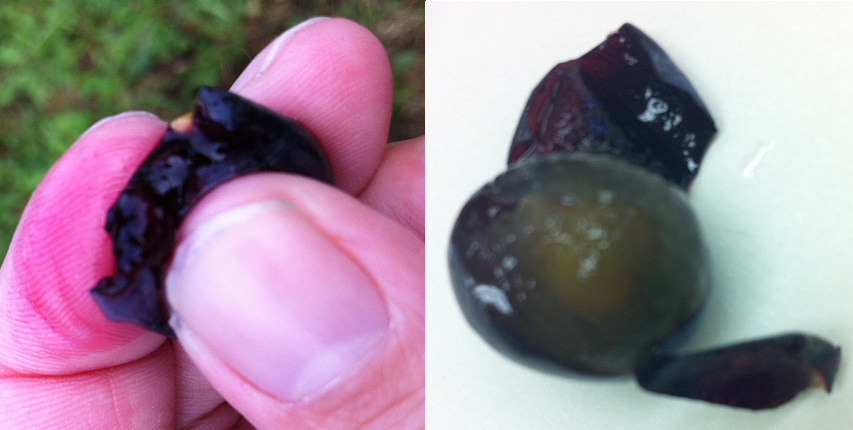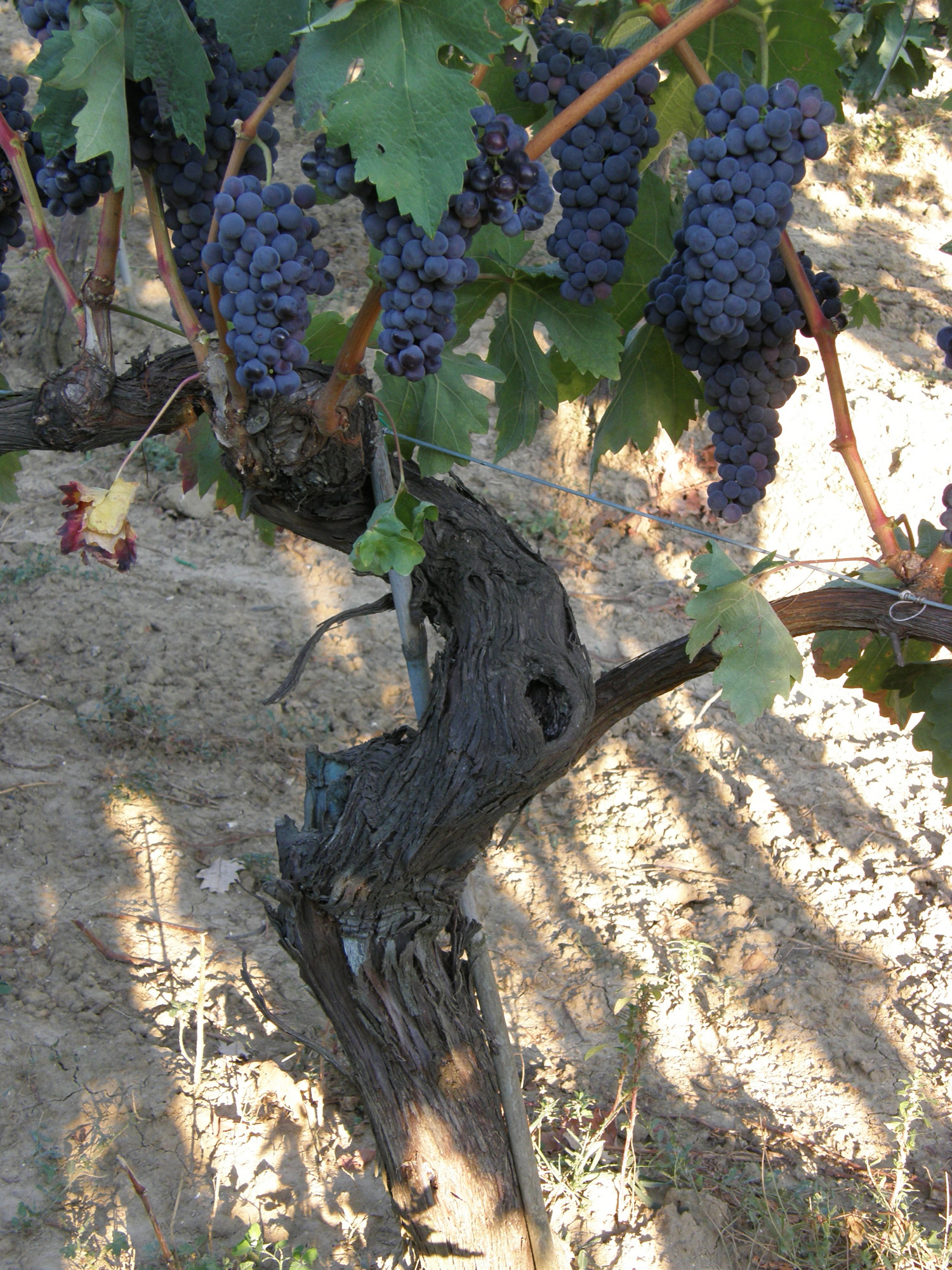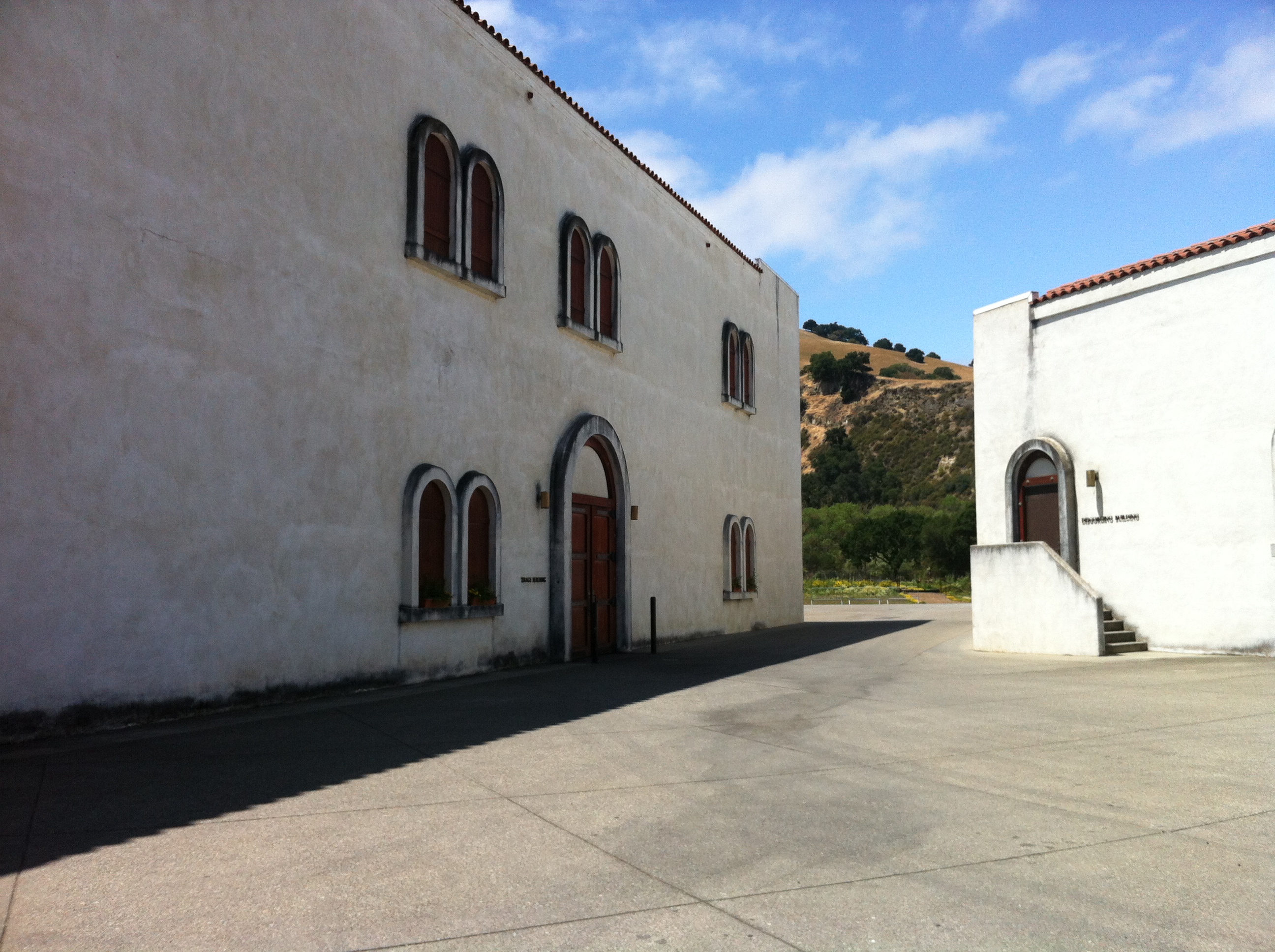|
Fair Play (AVA)
Fair Play is an American Viticultural Area (AVA) located in El Dorado County, California. It was established on February 26, 2001 by the Bureau of Alcohol, Tobacco and Firearms (ATF) after reviewing the petition submitted by Brian Fitzpatrick, President of Fair Play Winery Association, proposing to establish a viticultural area in southern El Dorado County known as "Fair Play." Fair Play viticultural area encompasses encircling the town of Fair Play and located entirely within the existing boundaries of the El Dorado and vast Sierra Foothills viticultural areas. The topography of Fair Play includes rolling hills at elevations between above sea level, making it the second highest average elevation after Squaw Valley-Miramonte viticultural area in the state. The soils are decomposed granite as part of the Sierra Nevada Foothills region, and the area is within the Cosumnes River watershed. In its cultivated , the most popular red wine grape variety is Zinfandel, although variet ... [...More Info...] [...Related Items...] OR: [Wikipedia] [Google] [Baidu] |
Fair Play Vineyard-Nov2023
A fair (archaic: faire or fayre) is a gathering of people for a variety of entertainment or commercial activities. Fairs are typically temporary with scheduled times lasting from an afternoon to several weeks. Fairs showcase a wide range of goods, products, and services, and often include competitions, exhibitions, and educational activities. Fairs can be thematic, focusing on specific industries or interests. Types Variations of fairs include: * Art fairs, including art exhibitions and arts festivals * Book Fairs in communities and schools provide an opportunity for readers, writers, publishers to come together and celebrate literature. * County fair (US) or county show (UK), a public agricultural show exhibiting the equipment, animals, sports and recreation associated with agriculture and animal husbandry. * Festival, an event ordinarily coordinated with a theme e.g. music, art, season, tradition, history, ethnicity, religion, or a national holiday. * Health fair, an event ... [...More Info...] [...Related Items...] OR: [Wikipedia] [Google] [Baidu] |
Grenache Blanc
Grenache blanc (; also known as garnatxa blanca in Catalonia) is a variety of white wine grape that is related to the red grape Grenache. It is mostly found in Rhône wine blends and in northeast Spain. Its wines are characterized by high alcohol and low acidity, with citrus and or herbaceous notes. Its vigor can lead to overproduction and flabbiness. However, if yields are controlled, it can contribute flavor and length to blends, particularly with Roussanne. Since the 1980s, it has been the fifth most widely planted white wine grape in France after Ugni blanc, Chardonnay, Semillon and Sauvignon blanc.J. Robinson (ed) ''The Oxford Companion to Wine'' Third Edition p. 334 Oxford University Press 2006 History Grenache blanc is thought to have originated as a mutation of the red version of Grenache in Spain. It then spread across the Pyrenees to France, finding a second home in the Rhône.Oz Clarke ''Encyclopedia of Grapes'' pg 113 Harcourt Books 2001 Wine regions Grenache bla ... [...More Info...] [...Related Items...] OR: [Wikipedia] [Google] [Baidu] |
Tinta Cao
Grand Noir de la Calmette (; or simply Grand noir) is a red ''teinturier'' grape variety that is a crossing of Petit Bouschet and Aramon noir created in 1855 by French grape breeder Henri Bouschet at his vineyard in Mauguio in the Hérault department.J. Robinson, J. Harding and J. Vouillamoz ''Wine Grapes - A complete guide to 1,368 vine varieties, including their origins and flavours'' pgs 428 & 664 Allen Lane 2012 The grape was named after the breeding station Domaine de la Calmette. As a teinturier, Grand noir is often used to add color to wines that it is blended into but is paler than other choices such as Alicante Bouschet. The vine tends to bud late and has a high productivity but with some susceptibility to the viticultural hazard of powdery mildew. J. Robinson ''Vines, Grapes & Wines'' pg 207 Mitchell Beazley 1986 While Grand Noir de la Calmette originated in France and was once widely grown in the Cognac and Languedoc wine regions, today it is rarely plan ... [...More Info...] [...Related Items...] OR: [Wikipedia] [Google] [Baidu] |
Tempranillo
Tempranillo (also known as Ull de Llebre, Cencibel, Tinto Fino and Tinta del País in Spain, Aragonez or Tinta Roriz in Portugal, and several other synonyms elsewhere) is a black grape variety widely grown to make full-bodied red wines in its native Spain. Its name is the diminutive of the Spanish ''temprano'' ("early"), a reference to the fact that it ripens several weeks earlier than most Spanish red grapes. Tempranillo has been grown on the Iberian Peninsula since the time of Phoenician settlements. It is the main grape used in Rioja, and is often referred to as Spain's noble grape. The grape has been planted throughout the globe's wine regions. In 2015, Tempranillo was the fourth most widely planted wine grape variety worldwide with under vine, of which 87% was in Spain where it is the most planted red grape variety. Unlike more aromatic red wine varieties like Cabernet Sauvignon, Sangiovese and Pinot noir, Tempranillo has a relatively neutral profile so it is often ... [...More Info...] [...Related Items...] OR: [Wikipedia] [Google] [Baidu] |
Syrah
Syrah (), also known as Shiraz, is a dark-skinned grape variety grown throughout the world and used primarily to produce red wine. In 1999, Syrah was found to be the offspring of two obscure grapes from southeastern France, Dureza and Mondeuse Blanche. Syrah should not be confused with Petite Sirah, a cross of Syrah with Peloursin dating from 1880. The style and flavor profile of wines made from Syrah are influenced by the climate where the grapes are grown. In moderate climates (such as the northern Rhone Valley and parts of the Walla Walla AVA in Washington State), they tend to produce medium to full-bodied wines with medium-plus to high levels of tannins and notes of blackberry, mint and black pepper. In hot climates (such as Crete, and the Barossa Valley and McLaren Vale regions of Australia), Syrah is more consistently full-bodied with softer tannin, jammier fruit and spice notes of licorice, anise and earthy leather. In many regions the acidity and tannin le ... [...More Info...] [...Related Items...] OR: [Wikipedia] [Google] [Baidu] |
Sauvignon Blanc
Sauvignon blanc () is a green-skinned grape variety that originates from the city of Bordeaux in France. The grape most likely gets its name from the French words ''sauvage'' ("wild") and ''blanc'' ("white") due to its early origins as an indigenous grape in South West France. It is possibly a descendant of Savagnin. Sauvignon blanc is planted in many of the world's wine regions, producing a crisp, dry, and refreshing white varietal wine. The grape is also a component of the famous dessert wines from Sauternes and Barsac. Sauvignon blanc is widely cultivated in France, Chile, Romania, Canada, Australia, New Zealand, South Africa, Bulgaria, the states of Oregon, Washington, and California in the US. Some New World Sauvignon blancs, particularly from California, may also be called "Fumé Blanc", a marketing term coined by Robert Mondavi in reference to Pouilly-Fumé. Depending on the climate, the flavor can range from aggressively grassy to sweetly tropical. In cooler cl ... [...More Info...] [...Related Items...] OR: [Wikipedia] [Google] [Baidu] |
Sangiovese
Sangiovese is a red Italian wine grape variety that derives its name from the Latin , "blood of Jove, Jupiter". Sangiovese Grosso, used for traditionally powerful and slow maturing red wines, is primarily grown in the central regions of Italy, particularly in Tuscany, where it is the dominant grape variety. Here, Sangiovese thrives in various subregions, including Chianti, Montalcino, and Montepulciano, whose diverse terroirs winemakers put to good use to craft wines that reflect the land's unique nuances. Sangiovese's ability to express terroir and age gracefully has earned it a revered status among wine enthusiasts worldwide, cementing its place as one of Italy's most cherished grape varieties. Because of its distinctive character and versatility, Sangiovese is the singular or primary grape variety used in iconic Italian wines from Tuscany such as bold and age-worthy Brunello di Montalcino and Vino Nobile di Montepulciano, to vibrant and fruity wines like Morellino di Scans ... [...More Info...] [...Related Items...] OR: [Wikipedia] [Google] [Baidu] |
Pinotage
Pinotage is a red wine grape that is South Africa's signature variety. It was cultivated there in 1925 as a cross between Pinot noir and Cinsaut (Cinsaut was known as "Hermitage" in South Africa at that time, hence the name). It typically produces deep red varietal wines with smoky, bramble and earthy flavours, sometimes with notes of bananas and tropical fruit, but has been criticised for sometimes smelling of acetone. The grape is a viticultural intraspecific cross of two varieties of ''Vitis vinifera'', not an interspecific hybrid. History Pinotage is a grape variety that was created in South Africa in 1924 by Abraham Izak Perold, the first Professor of Viticulture at Stellenbosch University. Perold was attempting to combine the best qualities of the robust Hermitage with Pinot noir, a grape that makes great wine but can be difficult to grow. Perold planted the four seeds from his cross in the garden of his official residence at Welgevallen Experimental Farm and then ... [...More Info...] [...Related Items...] OR: [Wikipedia] [Google] [Baidu] |
Pinot Noir
Pinot noir (), also known as Pinot nero, is a red-wine grape variety of the species ''Vitis vinifera''. The name also refers to wines created predominantly from Pinot noir grapes. The name is derived from the French language, French words for ''pine'' and ''black.'' The word ''pine'' alludes to the grape variety having tightly clustered, pinecone—shaped bunches of fruit. Pinot noir is grown around the world, mostly in cooler climates, and the variety is chiefly associated with the Burgundy (wine), Burgundy region of France (wine), France. Pinot noir is now used to make red wines around the world, as well as champagne, Sparkling wine, sparkling white wines such as the Italian wine, Italian Franciacorta, and Wine from the United Kingdom, English sparkling wines. Regions that have gained a reputation for red Pinot noir wines include the Willamette Valley (wine), Willamette Valley of Oregon (wine), Oregon; the Carneros (AVA), Carneros, Central Coast (AVA), Central Coast, Sonoma ... [...More Info...] [...Related Items...] OR: [Wikipedia] [Google] [Baidu] |
Petite Sirah
Durif is a variety of red wine grape mainly grown in Australia, California, France, and Israel. Since the end of the 20th century, wineries located in Washington (state), Washington's Yakima River Valley, Maryland, Arizona, Texas, West Virginia, Chile, Mexico's Baja California Peninsula, and Ontario's Niagara Peninsula have also produced wines from Durif grapes. It is the primary grape known in the U.S. and Israel as Petite Sirah, with over 90% of the California plantings labeled "Petite Sirah" being Durif grapes. The United States, U.S. Bureau of Alcohol, Tobacco, Firearms and Explosives (ATF) recognizes "Durif" and "Petite Sirah" as synonyms.PS I Love YoPetite Sirah Timeline The grape produces tannin (wine), tannic wines with a spicy, plummy flavour. It originated from Syrah pollen germinating a Peloursin plant. On occasion, Peloursin and Syrah vines may both be called Petite Sirah, usually because the varieties are extremely difficult to distinguish in old age. History In ... [...More Info...] [...Related Items...] OR: [Wikipedia] [Google] [Baidu] |
Petit Verdot
Petit Verdot is a variety of red wine grape, principally used in classic Bordeaux blends. It ripens much later than the other varieties in Bordeaux, often too late, so it fell out of favour in its home region. When it does ripen it adds tannin, colour and flavour, in small amounts, to the blend. Petit verdot has attracted attention among winemakers in the New World, where it ripens more reliably and has been made into single varietal wine. It is also useful in 'stiffening' the mid palate of Cabernet Sauvignon blends. When young its aromas have been likened to banana and pencil shavings. Strong tones of violet and leather develop as it matures. History Petit Verdot probably predates Cabernet Sauvignon in Bordeaux, but its origins are unclear. There are records of it in the eighteenth century, but its characteristics suggest an origin in much hotter climes than the Gironde. It is likely that it originates from the Pyrénées-Atlantiques where it was possibly domesticated from ... [...More Info...] [...Related Items...] OR: [Wikipedia] [Google] [Baidu] |







